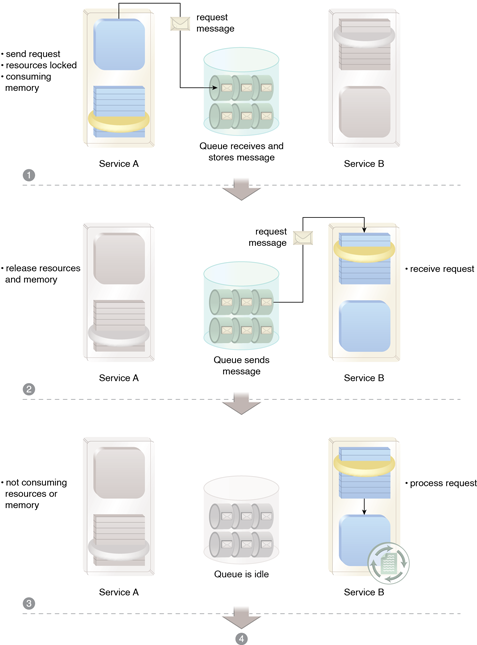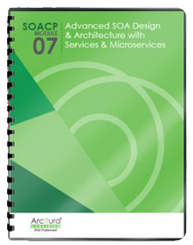SOA Patterns > Service Messaging Patterns > Asynchronous Queuing
Asynchronous Queuing (Little, Rischbeck, Simo)
How can a service and its consumers accommodate isolated failures and avoid unnecessarily locking resources?

Problem
When a service capability requires that consumers interact with it synchronously, it can inhibit performance and compromise reliability.
Solution
A service can exchange messages with its consumers via an intermediary buffer, allowing service and consumers to process messages independently by remaining temporally decoupled.
Application
Queuing technology needs to be incorporated into the surrounding architecture, and back-up stores may also be required.
Impacts
There may be no acknowledgement of successful message delivery, and atomic transactions may not be possible.
Architecture
Inventory, Composition

Service A sends a message to Service B, which is intercepted and stored by an intermediary queue (1). The queue the forwards the message to Service B (2), and while Service B is processing the message, Service A remains released from memory (3).

After completing its processing, Service B issues a response message back to Service A, which is also received and stored by the intermediary queue (4). Service A receives the response (5) and completes processing of the response, all the while Service B is deactivated (6).
Related Patterns in This Catalog
Atomic Service Transaction, Event-Driven Messaging, Messaging Metadata, Reliable Messaging, Service Agent, Service Callback, Service Instance Routing, State Messaging
Related Service-Oriented Computing Goals
This pattern is covered in SOACP Module 7: Advanced SOA Design & Architecture with Services & Microservices.
For more information regarding the SOA Certified Pofessional (SOACP) curriculum,
visit www.arcitura.com/soa.
This page contains excerpts from:
SOA Design Patterns by Thomas Erl
(ISBN: 0136135161, Hardcover, Full-Color, 400+ Illustrations, 865 pages)
For more information about this book, visit www.arcitura.com/books.

